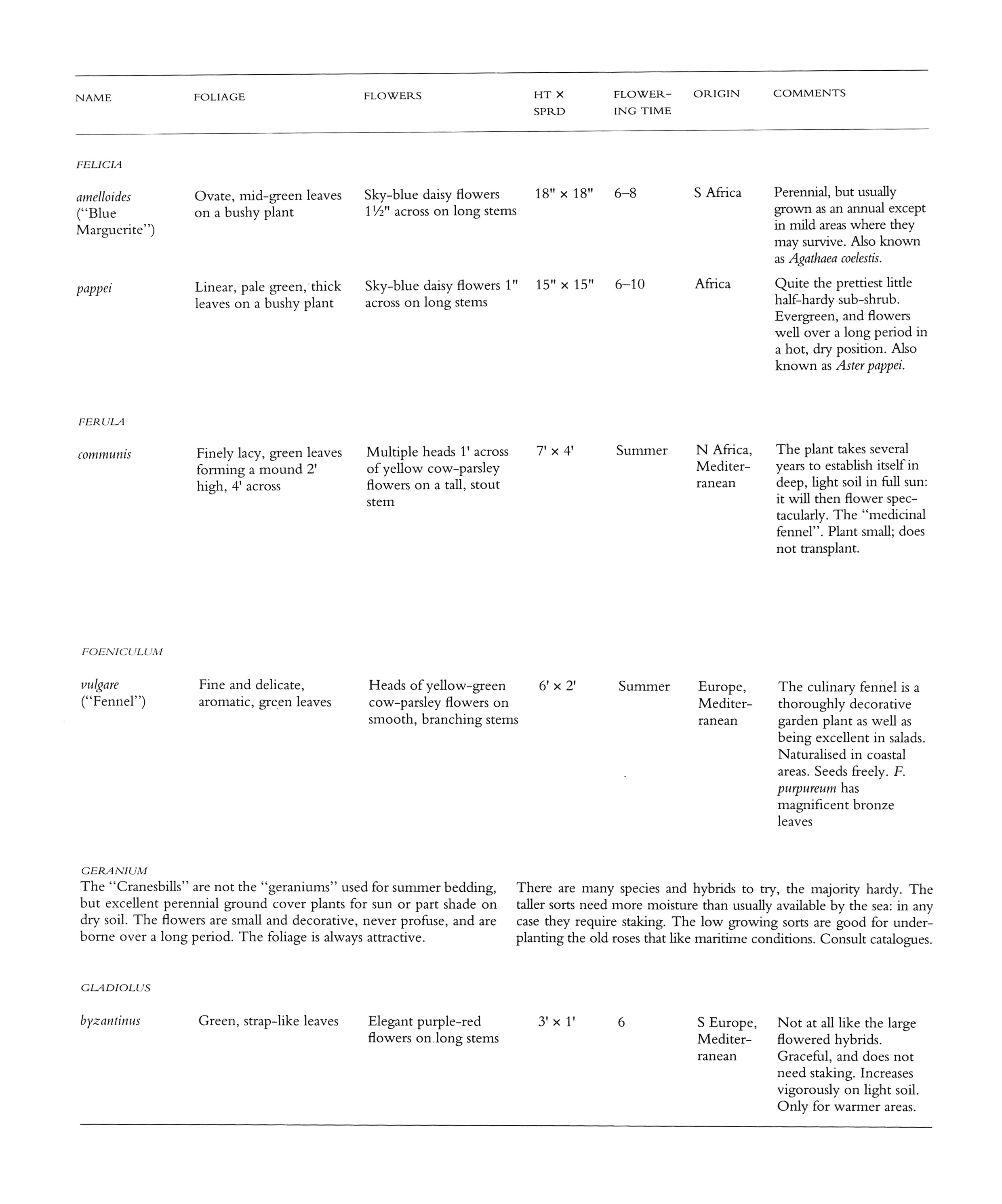The Book
The Seaside Gardener, by Richard Mortimer, is a book written with enthusiasm and passion. Richard describes where his love for seaside gardens originated, and gives out his tips and tricks on how to create a perfect coastal garden.
The book details all aspects of soil, seaside plants, weather, propagation, three, shrubs and wall plants to turn your barren coast into a seaside paradise.
From simple definitions, to the advanced classified lists, you can be guaranteed that you'll be able to find the coastal plants that will be perfect for seaside gardens. Colour pictures interspersed inside the book show you the vivid colour you can achieve with your own garden.
Below are some excerpts from the book, the first on the differences of spacing in conventional and coastal gardening:
“Ignore recommended planting distances. A windy site is rarely the place for isolated specimens, which become totally vulnerable to everything the elements can throw at them. The idea is to allow plants to quickly join ranks and interlace their branches. In this way many advantages to growth are created. Close coverage of bare soil cuts down on evaproation and suppresses weed and grass growth. Rain and dew is trapped, and a beneficient humid localised micro-climate forms which wind cannot entirely disperse. Heat cannot effectively penetrate dense foilage, and root runs are consequently cooler and more moist. Conversely, during cold snaps, the soil is insulated by foilage, and heat is thereby conserved, thus discouraging the formation of ground frost locally.”
A Beginning
"One spring day thirty years ago there could have been an equinoctial gale blowing off the Atlantic with awesome ferocity. Monumental rollers could have been running in from the grey horizon to cascade in furious foam over pernicious rocks. Icy rain could have been lashing across the island in harsh sheets."
Trials and Errors
"A superficial glance at any uncultivated stretch of British seaside moorland will prove the point that it is not host to any notably exciting flora, apart from the smallest wild flowers growing as flat as the proverbial pancake. There might be the occassional gathering of grizzled gorse, but that is the extent of it."
Soil and Plants
"When you take over a garden, or the site which you intend to make into a garden, an essential first step is to establish what type of soil you have inherited. To do this you can buy yourself a soil testing kit which will tell you the answer quickly and easily. The kit works on the principle of a chemical colour reaction to acidity or alkalinity, and measures the "pH" of the soil. pH is a logarithmic scale running from 1 to 14, the range of soil pH being from 4 to 9. Neutral is 7, acid from 6.5 to 4.5, alkaline from 7.5 to 8.5. Being a logarithmic scale, do not forget that 8.1 is ten times more alkaline than 7.1."
Weather and Plants
"Growing plants of sandy coastal soil might have its problems, but these are severely exacerbated by the almost constant desiccating effect of wind. There is rarely a day when the coastal air is not in movement, and many days in any season when gales tear in from the sea."

Planting
"When to plant is a source of endless debate. Spring or autumn, that is the question. Whether 'tis wise to risk the drought of spring or by refuting choose to face the rigours of an icy winter, aye, there's the rub."
Windbreaks
"Very few of us nowadays have access to the capital necessary to build long stretches of high stone walls, even if the labour and skill were available to do this. As it happens solid barriers have been shown to be disastrous to new plantings: the accelerated forces created by eddies in the lee of a solid obstacle can literally lift plants out of the ground."
Propagation
"The expense of furnishing a new garden can be daunting - especially a larger one! You should not economise when constructing your windbreaks, if at all possible: you need a flying start, and cuttings take time to reach a useful size. But you can thicken out nursery purchases with plants raised from cuttings, and you can certainly use this method to provide a supply of choice specimens for the garden proper."
Choosing Plants
"Whilst waiting for permanent plants to develop, enormously colourful bedding displays can be obtained from the pelargonium family and F1 petunia varieties. Both revel in hot sunshine and drought. They are ideal for containers where they require very little attention apart from dead-heading. Too much water and they will turn to leaf."

